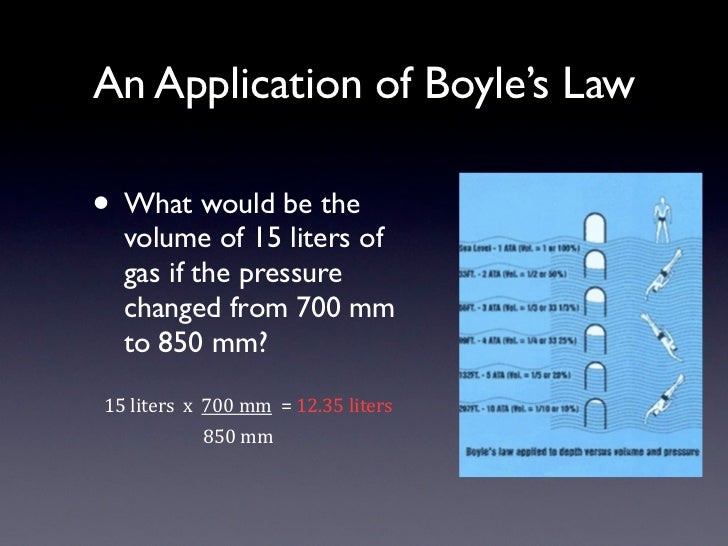Gas Laws physics:
Through experiments, it was established that gases irrespective of their nature obey the following laws
Boyle's law, Charles's law, and Gay-Lussac's law form the combined gas law. The three gas laws in combination with Avogadro's law can be generalized by the ideal gas law. This Lecture is a concept builder and contains TopicBoyle's lawCharles law,Avogadro's LawGas Laws and General / Ideal gas equation.Mcqs and concept buildingL. Start studying Laws of Charles, Boyle, & Avogadro. Learn vocabulary, terms, and more with flashcards, games, and other study tools. Terms in this set (16) Charles' Law. Temperature increases, volume increases. Pressure increases, volume decreases. When volume, temp,.
We are giving a detailed and clear sheet on all Physics Notes that are very useful to understand the Basic Physics Concepts.
Gas Laws in Physics | Boyle’s Law, Charles’ Law, Gay Lussac’s Law, Avogadro’s Law – Kinetic Theory of Gases
Boyle’s Law is represented by the equation:
At constant temperature, the volume (V) of given mass of a gas is inversely proportional to its pressure (p), i.e.
V ∝ (frac{1}{p}) ⇒ pV = constant
For a given gas, p1V1 = p2V2
Charles’ Law
At constant pressure, the volume (V) of a given mass of gas is directly proportional to its absolute temperature (T), i.e.
V ∝T ⇒ (frac{V}{T}) = constant
For a given gas, (frac{V_{1}}{T_{1}}=frac{V_{2}}{T_{2}})
At constant pressure, the volume (V) of a given mass of a gas increases or decreases (frac{1}{273.15}) by of its volume at 0°C for each 1°C rise or fall in temperature.
Image
Volume of the gas at t°C,
Vt = V0(left(1+frac{t}{273.15}right))
where, V0 is the volume of gas at 0°C.
Gay Lussac’s or Regnault’s Law
At constant volume, the pressure p of a given mass of gas is directly proportional to its absolute temperature T, i.e.
p ∝ T ⇒ (frac{P}{T}) = constant
For a given gas, (frac{p_{1}}{T_{1}}=frac{p_{2}}{T_{2}})
At constant volume, the pressure p of a given mass of a gas increases or decreases by (left(1+frac{t}{273.15}right)) of its pressure at 0°C for each 1°C rise or fall in
Volume of the gas at t°C,
pt = p0(left(1+frac{t}{273.15}right))
where, p0 is the pressure of gas at 0°C.
Avogadro’s Law
Avogadro stated that equal volume of all the gases under similar conditions of temperature and pressure contain equal number of molecules. This statement is called Avogadro’s hypothesis. According to Avogadro’s law N1 = N2, where N2 and N2 are number of molecules in two gases respectively.
(i) Avogadro’s number:
The number of molecules present in lg mole of a gas is defined as Avogadro’s number.
NA = 6.023 x 1023 per gram mole
(ii) At STP or NTP (T = 273 K and p = 1 atm), 22.4 L of each gas has 6.023 x 1023 molecules.
(iii) One mole of any gas at STP occupies 22.4 L of volume.
Dalton’s Law of Partial Pressure
It states that the total pressure of a mixture of non-interacting ideal gases is the sum of partial pressures exerted by individual gases in the mixture, i.e. p = p1 + p2 + p3 + ………
Kinetic Theory of Gases:
In this concept, it is assumed that the molecules of gas are very minute with respect to their distances from each other. The molecules in gases are in constant, random motion and frequently collide with each other and with the walls of any container.
In this portion, you will learn about the properties of gases, based on density, pressure, temperature and energy. Continue reading here to learn more.
| Kinetic Energy of an Ideal Gas | Assumptions of Kinetic Theory of Gases |
| Gas Laws | Ideal Gas Equation |
| Real Gases | Degrees of Freedom |
| Mean Free Path | Brownian Motion |
| Critical Temperature |

Although the student really only needs to know the Ideal Gas Law (1) in order to solve pressure-volume-temperature problems in chemistry, often for historical reasons questions are asked about Boyle’s Law, Charles’ Law and the Gay-Lussac`s Law. For me, since I remember the Ideal Gas Law, I have often had trouble remembering which law is which. Here is a simple mnemonic that helps me derive the three laws from the Ideal Gas Law.
Write the Ideal Gas Law as in equation (2).
Write the three sub-laws in alphabetical order.
Summarize Each Of The Simple Gas Laws (boyle's Law Charles's Law And Avogadro's Law)
Begin at the left in a clockwise motion and group the factors in groups of two.
I have found this an easy way to recover the three sub-laws from the Ideal Gas Law.
Thanks for reading,
Dr. Kaz
Boyle's Law Of Gas
mississaugaphdtutor.wordpress.com
